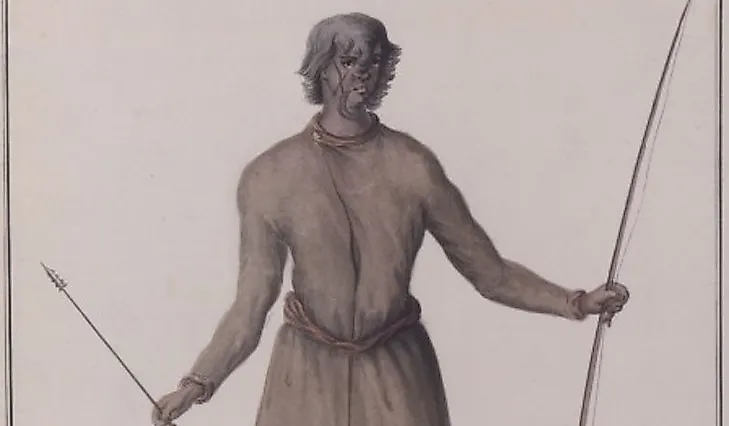The Algonquin People - Cultures of the World

5. Description
The Algonquin people are a group of First Nations aboriginals, who live mostly in the Canadian provinces of Quebec and Ontario. Smaller numbers of them are disbursed throughout Canada and other regions of North America as well. According to anthropological experts, archeological records show that these people have called the Ottawa Valley region their homes for far longer than was previously believed. In fact, it is felt that they may have lived there as far back as approximately 8,000 years before the first Europeans began to explore and settle North America. Traditionally, the Algonquin People have used the Algonquin language, a dialect that’s known among them in their own tongue as Omàmiwininìmowin, which was itself derived from the Ojibwe language. They are known to be closely related to the Ojibwe and Odawa peoples, both in terms of language and culture. This is a fact that is not surprising at all, considering that they live in proximity to one another, together forming the Anishinaabe grouping within the larger First Nations community.
4. Architecture
Being accomplished hunter-gatherers, the Algonquin peoples had large territorial ranges within which they lived and moved about in search for food. Nonetheless, securing warm shelters to live in during the cold winter season was just as much a priority for the Algonquins as was finding nourishment. Thus, they relied mainly on their transportable homes, which were called "wigwams" to maintain relatively unhindered movement without sacrificing the comfort afforded by a home. These wigwams were conical or dome-shaped dwellings, equipped with either an oblong or round floor that could accommodate one to two families. Their outer coverings were made of animal skins, reed mats, or sheets of bark. These coverings were supported by stringers tied to frames of pliable poles inserted directly into the ground, then tied together at the opposite end. The middle area of the wigwam was occupied by a hearth, where cooking implements were typically hung. Anything that the Algonquin people owned were stored around the perimeter of the wigwams. Unless it was very cold, they usually slept outside of the wigwams, staying warm and comfortable by covering themselves with blankets made out of animal skins.
3. Cuisine
Canada’s First Nations peoples were expert hunters and gatherers who relied on what Mother Nature provided to them as their main food sources. Some groups, including many Algonquins, did also know how to grow their own crops. The majority of them gathered edible plants and hunted wild animals to provide for their families. Those who did farm grew squash, beans, and corn, which were the staple crops of the Native American peoples to the south. Those who hunted ate whatever they could kill in the wilderness. Algonquin game meat included whales, bears, caribou, seals, beavers, squirrels, and moose. Living in a cold clime, wherever they went and whatever food they might find there, they ate, whether that was white-tailed deer on land, or sea creatures such as cod and crustaceans. Food preparation was usually simple, involving either roasting, boiling, or drying with smoke.
2. Cultural Significance
The Algonquin peoples were deeply religious, believing in constant interaction between the physical world and the spiritual world. They called their spiritual leaders “shamans” or “medicine men”. These revered community members were believed to have special powers in communicating with spirits, and performed rites of magical nature to cure the sick and drive malicious spirits away. They were artisans as well, as evidenced by the elaborate arrangements of quills and beadwork that were used to decorate the clothing of the Eastern Woodlands Algonquians. The famous "dream catcher" also originated within this group. These were believed to keep bad dreams away by snagging them in their webs, letting only the good ones pass through. The Algonquin peoples' clothing was made mostly out of animal skins and fur, which were tanned by smoking. Deerskin was quite popular in those days, not only because deer were abundant, but also because the clothes they made from them were comfortable and long lasting.
1. Threats
Unlike some Native American and First nations groups, most estimates place the Algonquin people today as having a population this is alive and well, similar to that seen at the time of first European contact. Algonquin communities are still found throughout Canada up to this day, specifically in the Ottawa River Valley in Quebec and Ontario. Notable communities with significant proportions of Algonquins living there today include Greater Golden Lake, Mattawa/North Bay, Ottawa, and Snimikobi. These people are continuously working on arriving at a unified approach to reach settlements that grant them more property within their ancestral homelands. With increased land rights, they feel that they can live more easily peacefully with their families, and practice their traditional ways amidst a modern world.











